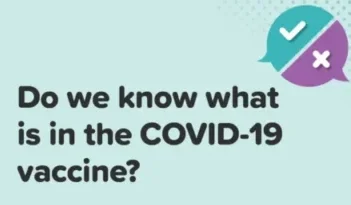The packet routing system used is called CORONA (COordinate and ROuting System for NAnonetworks). [7]
This model requires the configuration of nanonodes distributed throughout the body, i.e., nanosensors and nanoantennas, which have the ability to achieve high transmission rates over very short distances when operating in the most promising operating spectrum of the Terahertz band(0.1 -10.0 THz), which propagate the signal to the other nanonodes; some of them must be fixed and are positioned on the body tissue (endothelium, blood vessel walls and tissues of the various organs) like an anchor, and triangulate the position of the other nanonodes, measuring their distance and the hops in the connection; others are instead mobile, since they are present in the circulatory system, i.e. dynamic with the ability to aim at specific targets. In the operational phase, the routing uses the appropriate subset of anchors, required by the sender of the packet, to transmit the data.
This system operates efficiently, resulting in packet re transmission and very low loss rate, promoting energy efficiency. [8]
Sending data outside the body must be sufficiently powerful, while maintaining optimal signal clarity, since skin hydration, propagation distance and frequency range affect the loss of trajectory that blurs the signal and with it the message; it is therefore important to use different frequencies: 0.1 – 4 THz to pass through the epidermis; for signal propagation through the blood and resistant gases in the lungs, the range is: 0.01 – 0.96 THz.
Subsequently, the CORONA model was improved and simplified, allowing the transmission of packets to more distant anchors, avoiding intermediate steps: it was then completed with a multi-hop routing scheme based on a distributed cluster, with cluster selection algorithm; it was then renamed DCCORONA [7]
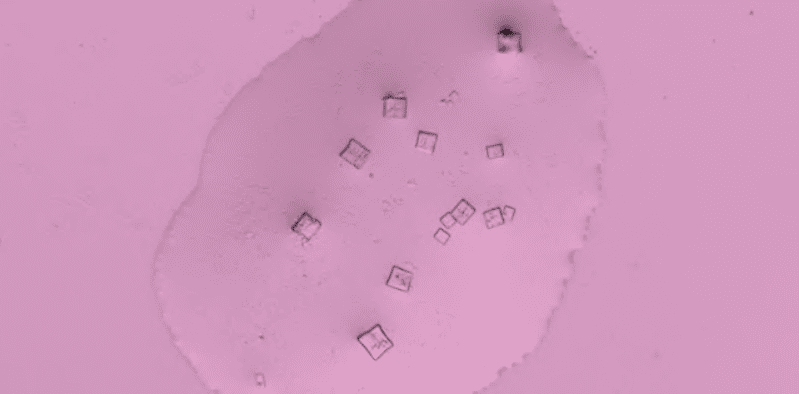
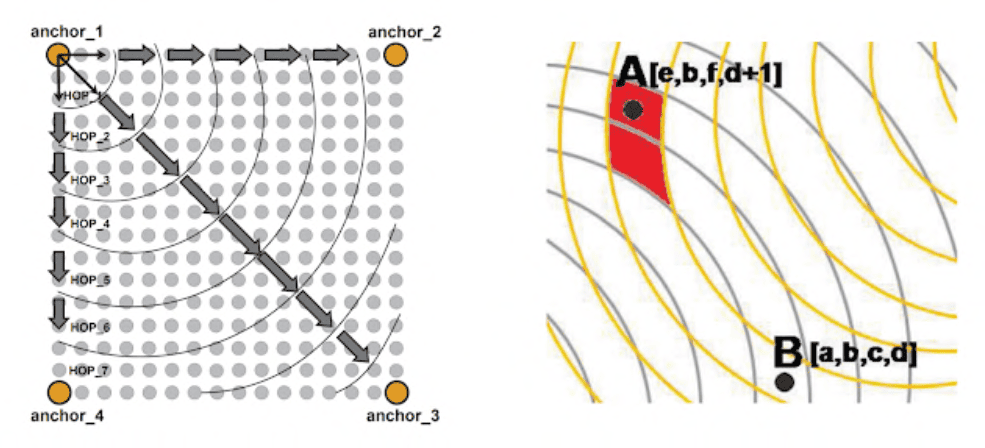
and addressing of data packets, while on the right is shown a limitation in
anchor routing (Tsioliaridou, A.; Liaskos, C.; Ioannidis, S.; Pitsillides, A.
2015)
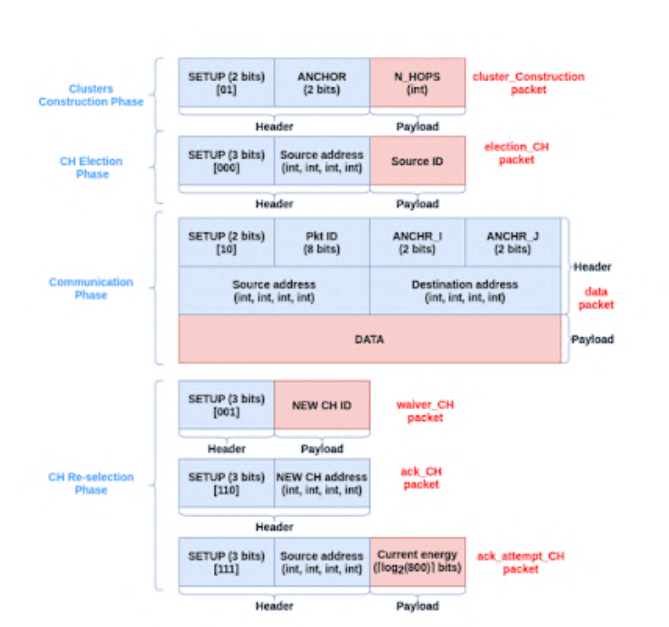
Louail, L.; Alioutat,Z; Harous, S. 2020)
The protocol used in nanocommunications is called TSOOK (Time-Spread On-Off Keying) [9], encoding the activation and deactivation of time propagation on and off.
It is the appropriate activation method by which request-response/client-server mechanisms are enabled in this type of networks. A logical 0 or 1 is represented by silence (short pulse) with a relatively long transmission interval (long pulse), respectively; this simplifies the receiver and avoids the probability of collisions, as well as recovering the signal and interpreting it without noise or interruptions, given its simplicity. Basically, data packets and headers are encoded with 0s and 1s, according to IEEE communication protocols.
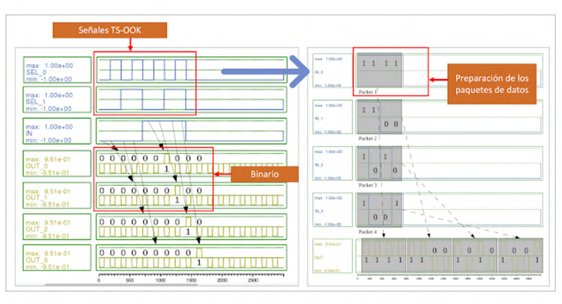
The binary-coded signals are then transformed into data packets by the demux circuit. The parallel-to-series converter, on the other hand, is a circuit that can take different sets of input data, carry them on different QCA wires, and transmit them at different times on the output wires.
This explains why devices with Bluetooth, such as smartphones, are able to detect MAC addresses, originating from people who have received the “vaccine”.
It is inherently taken for granted the presence of a Media Access Control (MAC), in particular it would be likely the DRIH-MAC model [10] , which is a receiver-initiated protocol for communication between nanonodes in a wireless electromagnetic nanoreticle, with the aim of maximizing energy consumption; this protocol is a distributed and predictive technique to access the media; the scheduling of communications is in coordination with the process of energy harvesting, which is optimized by 50% compared to the MAC protocol and this is an essential factor for the limitations related to the scale and application environment.
Bluetooth can be used in contact tracing and Global Positioning System (GPS) can be used in monitoring the real- time as well as historical locations of COVID-19 patients. [6]
The phenomenon regarding the attraction of coins by inoculates could also be explained: although neither graphene nor its derivatives are magnetic, both graphene and graphene oxide can conduct enough electricity across cell membranes to magnetize nearby superparamagnetic particles, to cause widespread magnetization of people receiving the vaccine. [11]
In order to synchronize communications between nanonodes, the presence of a nano-CPU is essential, which requires at least one oscillator, which defines the clock frequency (oscillations per second), measured in Hertz (Hz). [9]
In-vivo interaction of nano-oscillators is given by the ability to activate them, via bio electric signals and can be used to selectively rectify the operating frequency of a given field. For example, nano-oscillators can harvest wireless energy and produce wireless electrical stimulation of cells such as neurons.
In the topology hierarchy, there are next the nanorouters, which receive signals from the nanonodes, process them and send them to the nanointerfaces, which will emit them outside the body, with signal effective to cross the skin barrier. They are needed to route and decode the signals for sending, but also for receiving.
To form a nanorouter it is necessary to have wire crossings that create several overlapping circuit structures: logic gates, demultiplexer (demux) and parallel-series converter. [9]
Going back to the circuit observed by Prof. Campra during the observance with electron microscopy of the blood of vaccinated people: the quantum cell (QCA) consists of 4 quantum dots (GQDs), whose polarization is variable.
It is possible to distinguish the binary code, consisting of 0 and 1, based on the positive or negative charge of the quantum dots. A QCA cell would require 4 GQDs (regions where an electric charge may or may not be localized) to compose itself.
Each cell has 2 free moving electrons, which can create tunnels between the quantum dots, but tunneling to the outside of the cell is not allowed, due to a high potential barrier. This circuit represents a nanorouter, but through the combination of QCA cells it is possible to obtain electronic schemes of transistors, processors, multiplexers, demultiplexers, etc., with various functions and shapes. [12]


